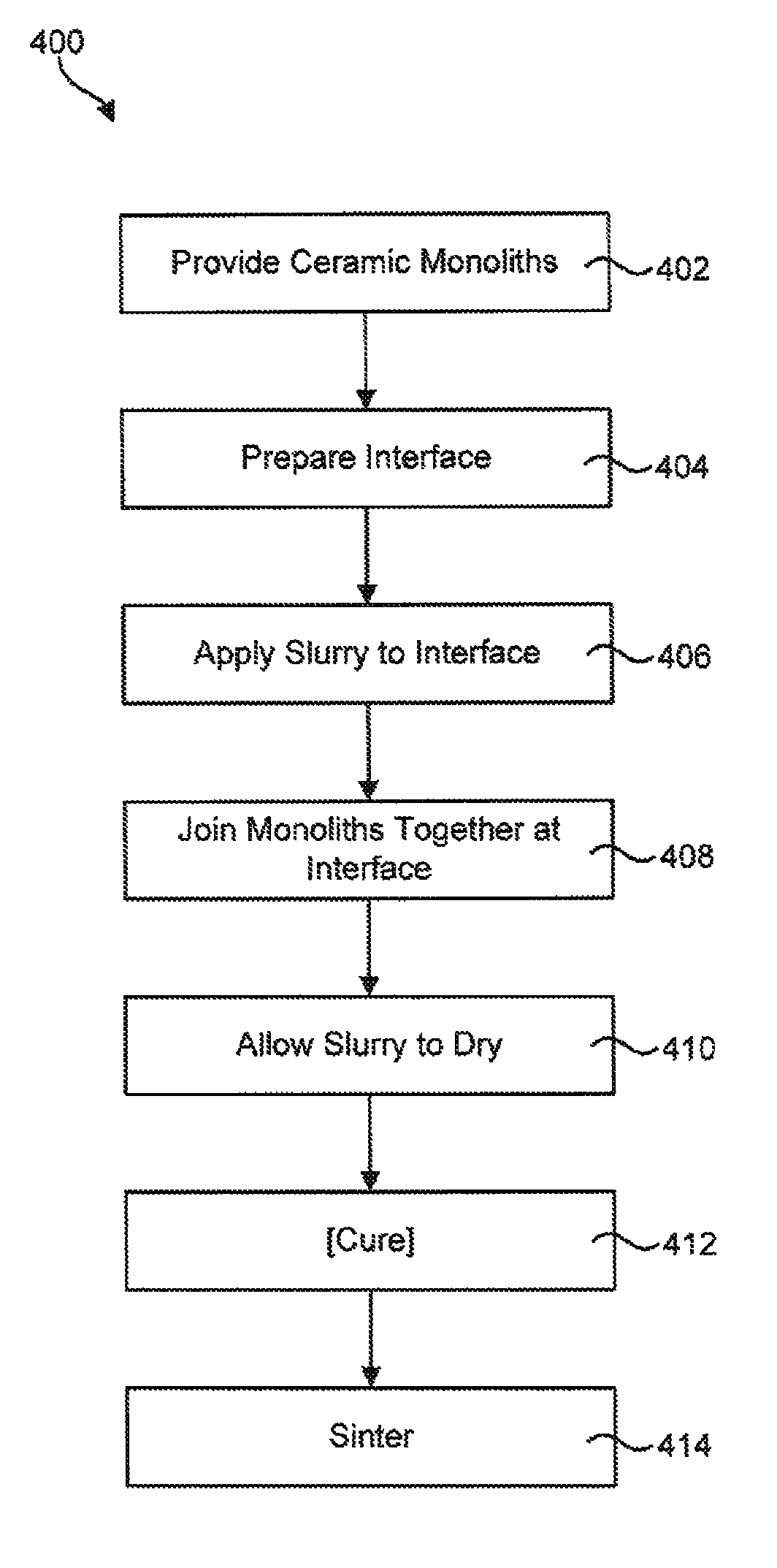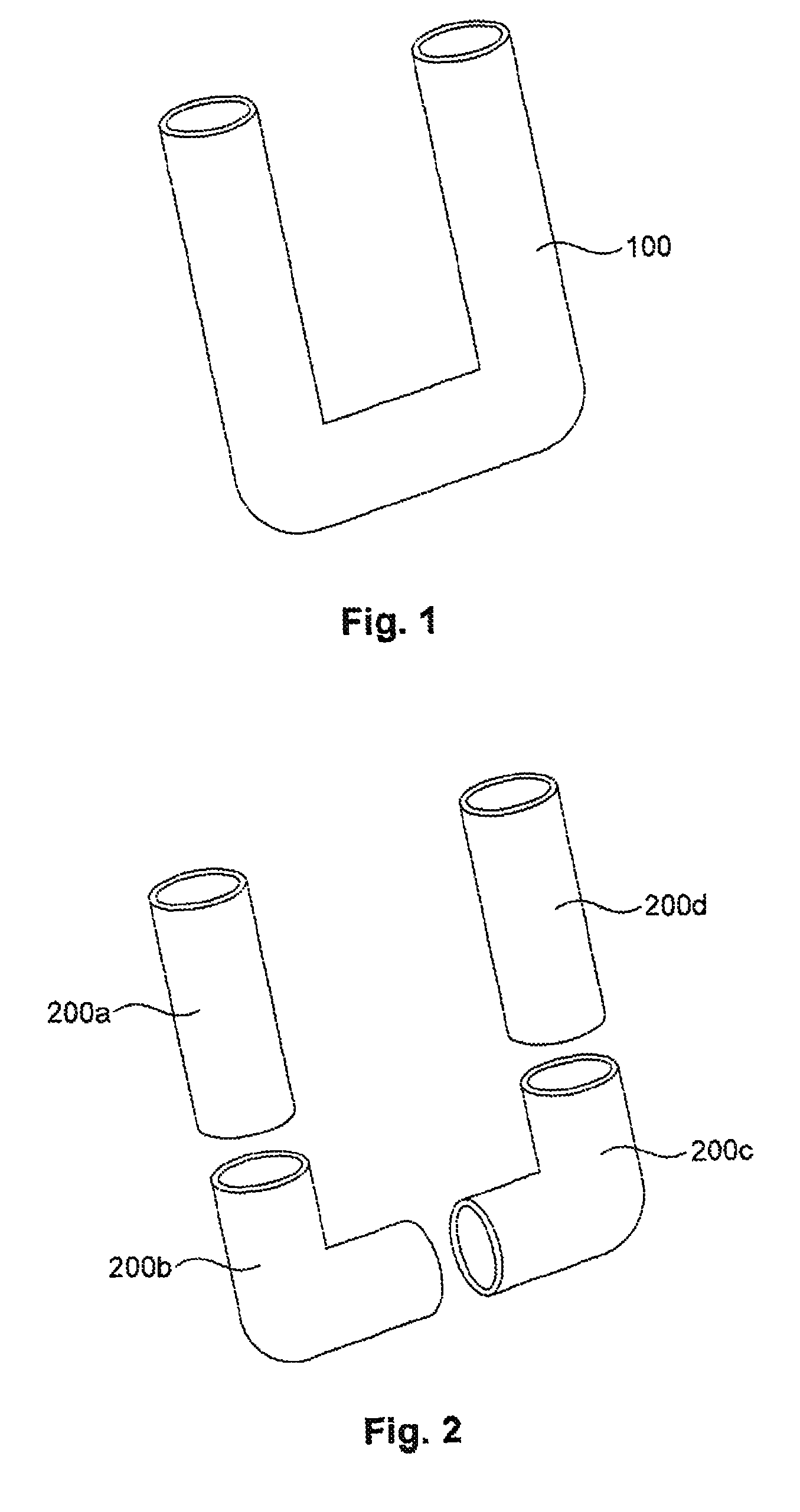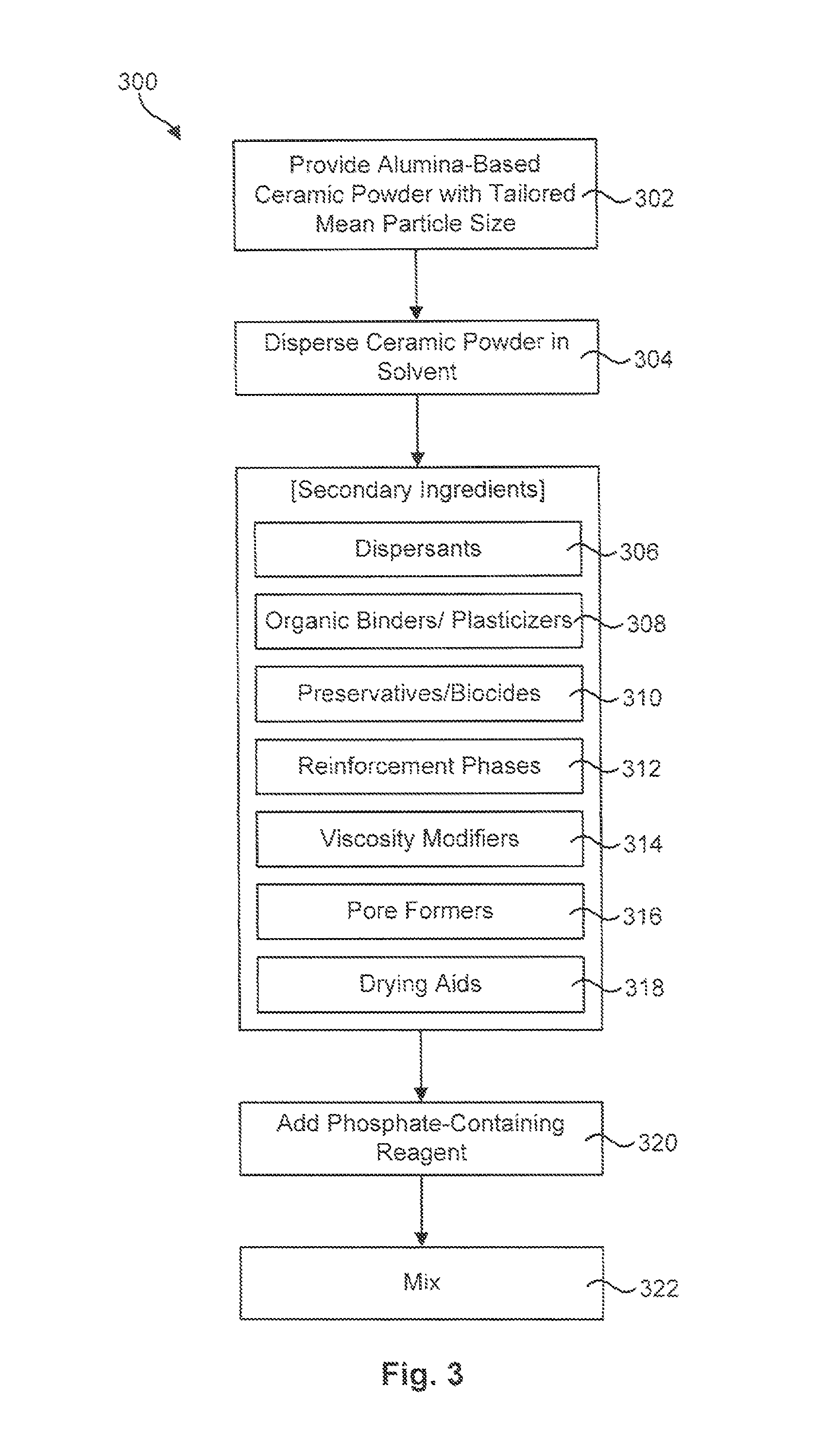Method for joining ceramic components
a technology of ceramic components and components, applied in the field of ceramics, can solve the problems of difficult to manufacture using conventional ceramic fabrication techniques, difficult to meet the requirements of engineering designs for many applications, and difficult to meet the requirements of manufacturing, etc., to achieve the effect of improving thermal properties, improving strength, and reducing shrinkag
- Summary
- Abstract
- Description
- Claims
- Application Information
AI Technical Summary
Benefits of technology
Problems solved by technology
Method used
Image
Examples
example 1
[0051]A slip, containing the reactants alumina powder and phosphoric acid, among other constituents, may be produced using the process described in association with FIG. 3. Two ceramic components may be fabricated by pouring the slip into a mold. The slip may then be dried at room temperature to provide a pair of green ceramic components. The slip may then be applied to one or more mating surfaces of the green components. While the slip is still wet, the components may be joined together at their mating surfaces. Pressure may or may not be applied to the joint. The joint may then be allowed to dry and the entire assembly may be fired at a temperature between about 250° C. and 1600° C. to harden and densify the ceramic components and the joint.
[0052]Two green ceramic components were joined using the process described in the previous paragraph and fired at a temperature of approximately 900° C. The slip contained alumina powder having a mean particle size between 1 and 5 microns. The ...
example 2
[0053]A slip, containing the reactants alumina powder and phosphoric acid, among other constituents, may be produced using the process described in association with FIG. 3. Two ceramic components may be fabricated by pouring the slip into a mold. The slip may then be cured at a temperature between about 40° C. and 250° C. until the ceramic components are semi-hard. The hardness may be increased by increasing the curing temperature. The slip may then be applied to one or more mating surfaces of the pre-cured components. If desired, the mating surfaces may be polished or roughened prior to applying the slip. While the slip is still wet, the components may be joined together at their mating surfaces. Pressure may or may not be applied to the joint. The joint between the cured ceramic components may then be allowed to dry and the entire assembly may be fired at a temperature between about 250° C. and 1600° C.
[0054]Two ceramic components pre-cured at 220° C. were joined using the process...
example 3
[0055]A slip, containing the reactants alumina powder and phosphoric acid, among other constituents, may be produced using the process described in association with FIG. 3. Two ceramic components may be fabricated by pouring the slip into a mold. The slip may then be fired at a temperature between about 250° C. and 1400° C. until the ceramic components are hard and strong. Their hardness and strength may be increased by increasing the firing temperature. The slip may then be applied to one or more mating surfaces of the fired components. If desired, the mating surfaces may be polished or roughened prior to applying the slip. While the slip is still wet, the components may be joined together at their mating surfaces. Pressure may or may not be applied to the joint. The joint may then be allowed to dry and the entire assembly may be fired at a temperature between about 250° C. and 1600° C.
[0056]Two ceramic components, pre-fired at 1300° C., were joined using the process described in t...
PUM
| Property | Measurement | Unit |
|---|---|---|
| particle size | aaaaa | aaaaa |
| temperature | aaaaa | aaaaa |
| temperature | aaaaa | aaaaa |
Abstract
Description
Claims
Application Information
 Login to View More
Login to View More - R&D
- Intellectual Property
- Life Sciences
- Materials
- Tech Scout
- Unparalleled Data Quality
- Higher Quality Content
- 60% Fewer Hallucinations
Browse by: Latest US Patents, China's latest patents, Technical Efficacy Thesaurus, Application Domain, Technology Topic, Popular Technical Reports.
© 2025 PatSnap. All rights reserved.Legal|Privacy policy|Modern Slavery Act Transparency Statement|Sitemap|About US| Contact US: help@patsnap.com



